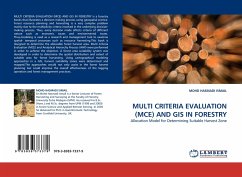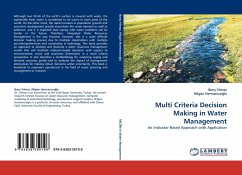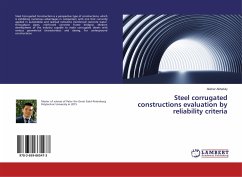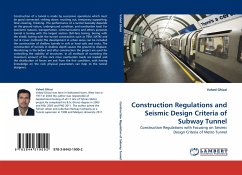MULTI CRITERIA EVALUATION (MCE) AND GIS IN FORESTRY is a forestry books that illustrates a decision making process using geospatial science. Forest resource planning and harvesting is a very complex problem mainly due to the multiplicity criteria involved in the underlying decision-making process. Thus, every decision made affects criteria of different nature such as economic issues and environmental issues. Thus,modeling is used as a research and management tool to examine spatial- temporal processes such as resource harvesting.This book is designed to determine the allowable forest harvest area. Multi Criteria Evaluation (MCE) and Analytical Hierarchy Process (AHP) were performed in order to achieve the objective. A forest area suitability system was developed in order to determine the spatial distribution and extent of suitable area for forest harvesting. Using cartographical modeling approaches in a GIS, harvest suitability zones were determined and mapped.The approaches would not only assist in the forest harvest planning but could improve the overall effectiveness of the logging operation and forest management practices.
Bitte wählen Sie Ihr Anliegen aus.
Rechnungen
Retourenschein anfordern
Bestellstatus
Storno








